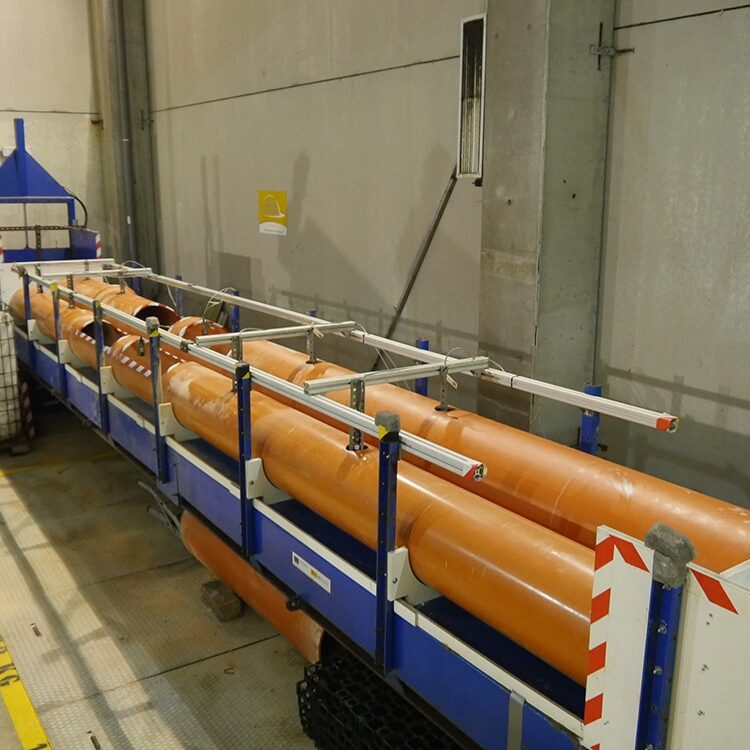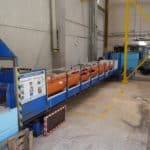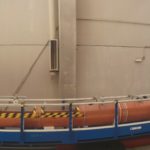
Location
University of A Coruña
EDAR Bens. Lugar de Bens, s/n, 15010 A Coruña | Spain
Fields of expertise
In-sewer process
SuDS solution
Digital water solution
Modality of Access
In-person
Access offered for each project
60 days
Number of Projects
2 (1 per call)
Expected composition of the visiting user-group
1 researcher during the full access period and 5 researchers for 10 days

Description
The flume consists of a 10 m length and 0.8 m width metallic bench for studying sewer processes using real wastewater from the pre-treatment system of A Coruña WWTP with a maximum flow discharge of 30 L/s.
Wastewater flow is split from the inlet tank through two v-notch weirs and falls into a discharge chamber before going through two different pipes. Wastewater is discharged in a downstream chamber where an automatic tailgate is placed to set downstream boundary conditions.
The slope can be changed from 0.5% to 6%. Wastewater loads can be monitored in the inlet and downstream tanks of the flume by using online turbidity and light absorbance probes. Several auto-samplers can be installed to determine conventional pollutant parameters. Water depth sensors are used for measuring the water depths along the pipes and in the inlet tank. The system also has an ultrasonic flowmeter, and punctual velocity measurements can be performed with Acoustic Doppler Velocimeter.
Furthermore, photogrammetric techniques and sampling analyses have been optimized to obtain the deposited sediment volume and composition respectively.
Finally, an UDV UB-Lab profiler is available to determine velocity and acoustic turbidity profiles.
Service provision
The facility is exploited under a collaboration program of UDC with A Coruña water supply (EMALCSA) and WWTP (EDAR Bens) municipal companies.
The facility has already been used to analyse the sediment accumulation, biodegradability and transport processes in circular and egg-shaped sewer pipes, in the scope of a collaborative project with A Coruña municipality and a national pipe manufacturer (ABN).
The applicability of sediment transport capacity formulas and gross solids transport have also investigated from flume experimental results, demonstrating the suitability of the facility to generate useful scientific data.
Fundamental and applied research projects on real-time control of sewers, estimation of sewer flow and sediment deposits from temperature measurements can be performed. Besides, the facility offers the possibility of using not only a wide range of different pipe sections to analyse in-sewer sediment and biological processes or blockages, but also testing other drainage elements such as grids, gates or pumps with real and totally characterized wastewater or test new sensors and monitoring techniques in realistic and controlled conditions useful for academia, industry and water utilities.









